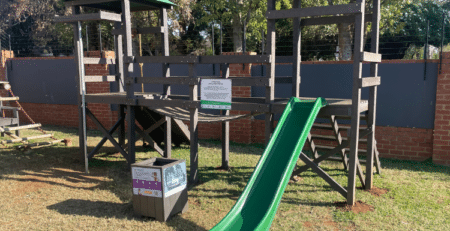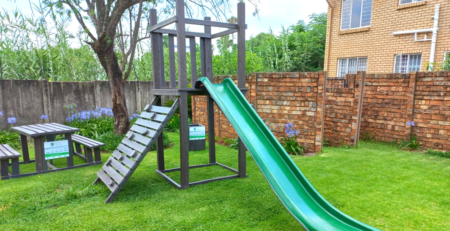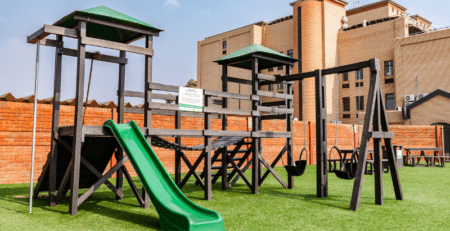Springing into life: revitalising community scheme gardens
As winter’s grip loosens, it’s time to spring into life and breathe new life into our community scheme gardens. It’s time for South Africans to put aside their troubles and enjoy the sunny outdoors with vibrant, eco-friendly outdoor spaces.
Plan and prep for spring
To prepare your community scheme gardens for the new season, start with a clear vision and a realistic plan. Review the current state of common areas like gardens, pathways, and recreational spaces to identify areas for improvement. Write down gardening goals and create a timeline for achieving them. Utilise online tools to gather ideas and images that match your desired style, inspiring the transformation.
Consider your objectives and budget before commencing the project to allocate resources effectively. Evaluate outdoor furniture and accessories, keeping what’s in good condition and discarding the rest to optimise space and layout.

Spring clean communal gardens
Create a blank canvas for transformation by clearing away sticks, leaves, and debris from winter, dead plants, and weeds. Rake up leaves and debris to improve drainage and prevent disease spread. Prune trees and shrubs, addressing winter damage that requires attention. Removing dead, diseased, or damaged branches ensures healthy and strong plant growth.
Reviving community scheme gardens
Prioritise garden care in September for a lush and vibrant garden during the upcoming spring and summer months. Combine sustainable practices with thoughtful garden care to ensure a harmonious and inviting outdoor space for all residents to enjoy throughout the warmer months.
Landscaping guidelines
According to Private Property, landscaping can be approached like designing and building a house. Start by incorporating large trees to soften the effect of multiple buildings and offer shade and privacy. Building a framework of shrubs, hedges, roses, and trees, complemented by perennials, bulbs, and groundcovers, creates a rich tapestry of colour and texture. Use ground covers to unite the design and strategically placed pots to make a statement.
Garden care
Implement water-wise strategies, mulching, and natural pest control to foster a thriving ecosystem. Embrace rainwater harvesting to reduce water consumption and nurture plant health. Water deeply but infrequently to encourage efficient water usage and support the growth of resilient plants. Enhance soil quality with compost, reducing the need for synthetic fertilisers and minimising waste. These sustainable garden care methods contribute to a lush and eco-conscious community.
Planting and sowing
The spring season is ideal for planting and sowing new plants in your community scheme’s common property gardens. Select plant species suitable for your local climate, adding colour, fragrance, and ecological significance to the shared outdoor spaces. Choose water-wise indigenous flowering plants that thrive with minimal water in hot, dry conditions, perfect for low-maintenance community scheme gardens. Consider planting trees like wild olive, paperbark acacia, and fever tree, adding vibrant colours and attracting birds and beneficial insects to create a harmonious outdoor environment for all residents to enjoy. You can even designate areas for vegetables and herbs, adding visual appeal and practicality to the shared spaces.
Placing eco-friendly outdoor furniture
In our mission to revitalise community scheme gardens, let’s not forget the importance of providing inviting spaces for people to gather, relax, and enjoy the outdoors. As part of our Outdoor Advertising Solutions for community schemes, STS offers a range of outdoor furniture including picnic tables, park benches, jungle gyms, and waste bins. All of our products are made from high-quality recycled plastic that is durable, weather-resistant, eco-friendly, and easy to clean. Plus, they come in various colours and styles that can match any aesthetic. Best of all, the furniture is supplied, installed, maintained, and insured at no cost to the community scheme.
- Picnic tables are a great addition, offering a place for residents to share meals, play games, or simply unwind. Our sturdy and stylish plastic timber picnic tables are designed for durability and comfort. When placing picnic tables in your common property areas, consider accessibility and ample space for gatherings. Find a shady spot to ensure comfort even on hot days and choose a location that complements the overall garden aesthetics.

- Park benches add a touch of serenity to your gardens, inviting residents to savour the scenery and engage in conversations. Our park benches provide comfortable and low-maintenance seating, perfect for moments of contemplation or people-watching. Strategically place park benches along pathways and in scenic spots to create inviting spaces for relaxation. Choose locations with pleasant views and ensure shade to maximise comfort.

- Jungle gyms bring joy and fun to outdoor spaces, encouraging children to play and exercise in a safe and engaging environment. Our jungle gyms made from recycled plastic are both eco-friendly and low maintenance, ensuring lasting enjoyment for young residents. Place jungle gyms in secure areas free from hazards, such as sharp objects or uneven surfaces. Consider shade for children’s comfort and incorporate them into the garden’s overall design.

- Waste bins are essential for responsible waste disposal, promoting cleanliness and sustainability in your communal spaces. Strategically place waste bins near picnic tables, park benches, and jungle gyms, where people are likely to generate waste. Ensure easy access and good visibility by placing them in well-lit areas. Emphasise proper waste disposal by labelling bins clearly. Regularly empty the bins to prevent overflowing and maintain the garden’s cleanliness.

As the world awakens to the charm of spring, so should our community scheme gardens. Let’s spring into action and nurture our community scheme gardens into thriving havens for everyone to enjoy.





